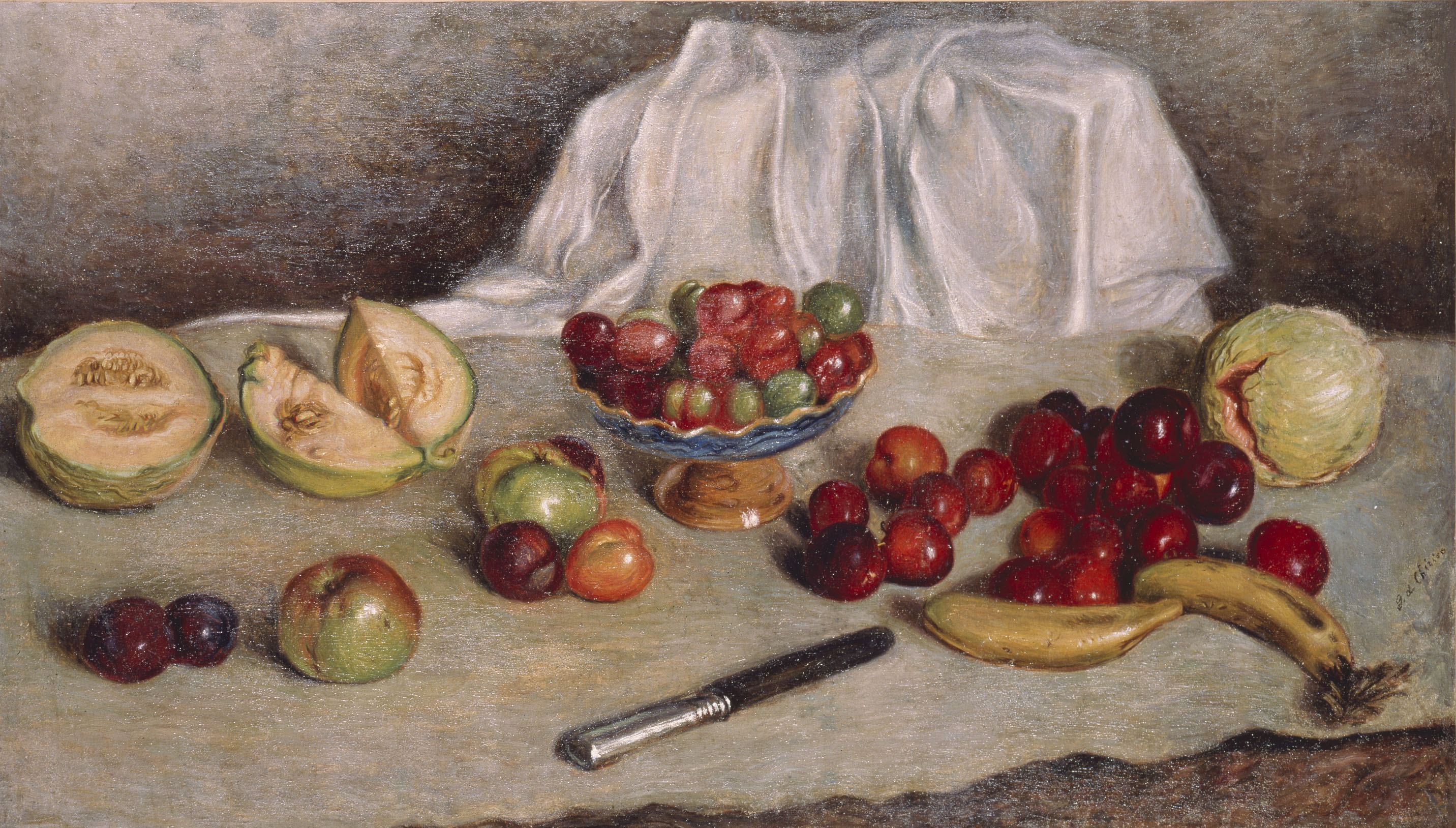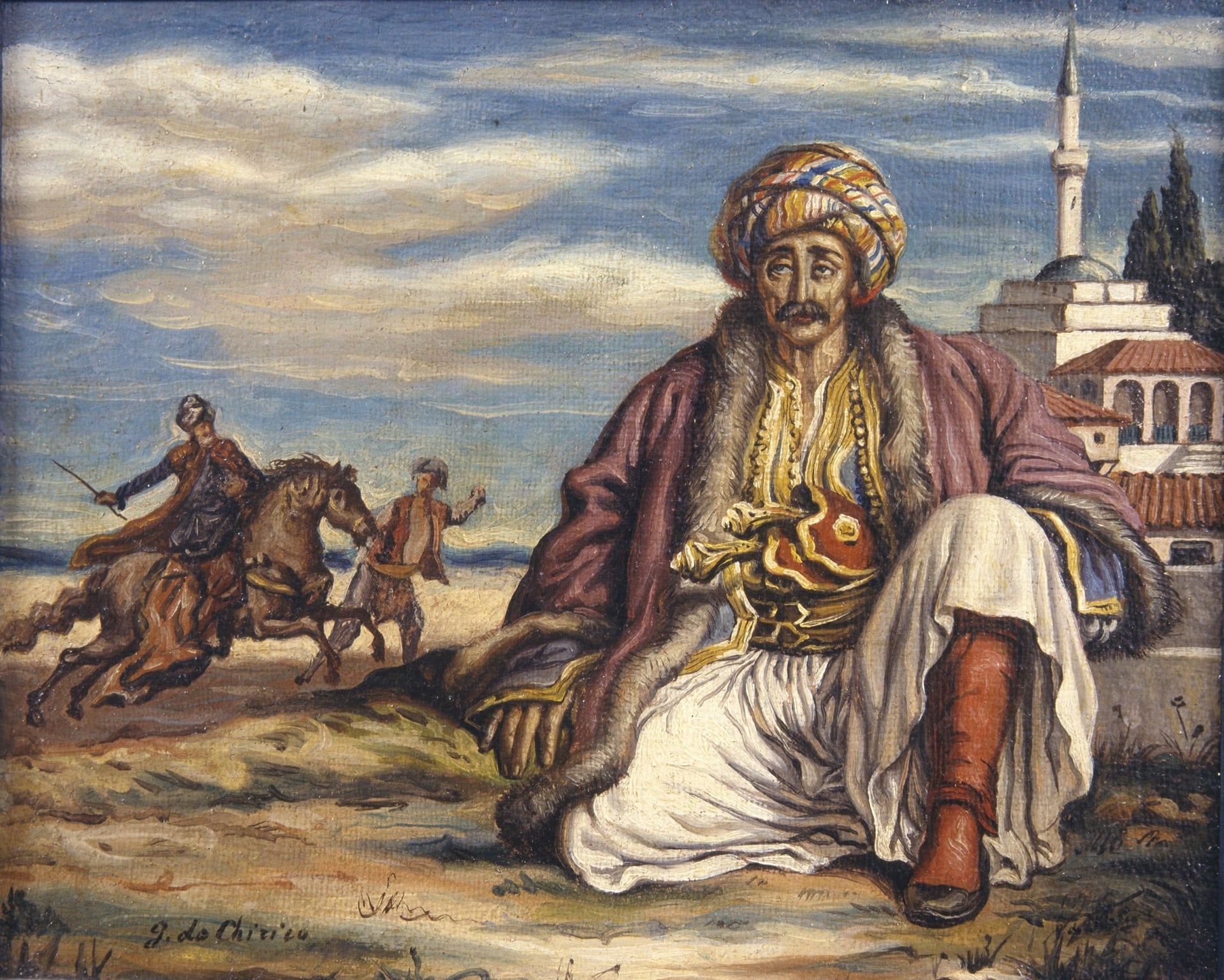05 April 2016
Pera Museum is proud to present an exhibition of Giorgio de Chirico, a pioneer of the metaphysical art movement and one of the most extraordinary artists of the 20th century. This part of Giorgio de Chirico: The Enigma of the World exhibition, called “New Themes and Classical Painting Technique (1930-1940)” illustrates de Chirico’s departure from Paris to move to New York.

Still Life with Knife, 1932, oil on canvas, 80 x 140 cm, Fondazione Giorgio e Isa de Chirico Collection, Rome
New Themes and Classical Painting Technique (1930-1940)
De Chirico’s heydays in Paris came to a dramatic end once the Great Depression wave of economic hardship arrived upon European shores. The Parisian art market and its seemingly incessant thirst for contemporary art at high prices all but dried up overnight. The subject-matter of the mid to late 1920s became difficult to sell, and de Chirico, encouraged by his newfound companion Isabella Pakszwer, began to look to the great masters with renewed vigour once again, with more traditional subjects and painting techniques returning to his artistic production. In search of more fertile terrain, de Chirico spent 1936-1937 living in New York. After several difficult years selling his work in Europe, the artist soon enjoyed the benefits of the favourable American art market. His return to Europe alternated in periods spent in Italy and Paris, owing to de Chirico’s disgust of the Fascist regime and their propagation of race laws.

The Turk, 1935, oil on canvas, 36,5 x 46 cm, Fondazione Giorgio e Isa de Chirico Collection, Rome

Seascape near Genova, 1933, oil on canvas, 53 x 65 cm, Fondazione Giorgio e Isa de Chirico Collection, Rome
Highlighting his various periods with examples from his earliest works to last ones, Giorgio de Chirico: The Enigma of the World exhibition took place at the Pera Museum between 24 February - 08 May 2016.

In 1962 Philip Corner, one of the most prominent members of the Fluxus movement, caused a great commotion in serious music circles when during a performance entitled Piano Activities he climbed up onto a grand piano and began to kick it while other members of the group attacked it with saws, hammers and all kinds of other implements.

Today we are thrilled to present the third playlist of Amrita Hepi’s Soothsayer Serenades series as part of the Notes for Tomorrow exhibition. The playlist titled Serenades to the Sun is presented by Kornelia Binicewiczon Pera Museum’s Spotify account.
Tuesday - Saturday 10:00 - 19:00
Friday 10:00 - 22:00
Sunday 12:00 - 18:00
The museum is closed on Mondays.
On Wednesdays, the students can
visit the museum free of admission.
Full ticket: 300 TL
Discounted: 150 TL
Groups: 200 TL (minimum 10 people)